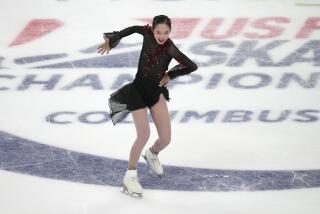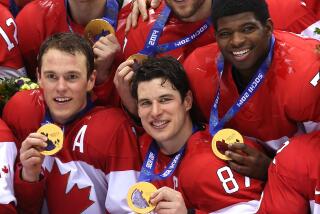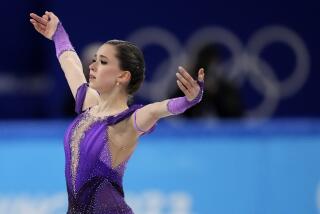Five Winter Olympics terms you can use to impress your friends
One of the great things about the Winter Olympics is people who have paid no attention to a sport for three years and 50 weeks suddenly are experts. In an effort to aid your water-cooler talk, we are arming you with five terms you will likely hear over the next two weeks.
Clap skate: First, no truth to the rumor that UCLA’s speedskating team (if it had one) has an eight-clap skate. The design has been around forever but it didn’t become popular until the 1990s. A regular skate has the boot firmly affixed to the skate. However, in a clap skate, the front of the boot is hinged, allowing the back of the boot to rise off the skate. It’s helpful because the skate remains in contact with the ice longer.
Double cork: This is a snowboarding term for a spin that is not only left to right or right to left, but also up and down. Double means you do the up and down twice. Now, some are referred to as frontside, which means you are spinning counter-clockwise so your forward foot is leading the spin. Backside is clockwise, meaning you lead with your back foot. Either way, don’t try it at home.
Double hackweight takeout: Boy, it doesn’t get any better than this in curling. In short, it’s when you take out two of your opponent’s stones with a single shot. It’s usually done at a slower speed, which allows the stone, or “rock” if you prefer, to curl more sharply behind any guard stones. Curling is addictive, and even if you don’t understand it, you can follow what’s happening.
Fortner action: This is associated with biathlon rifles and named for Peter Fortner, a German gunsmith, and not Mike Fourtner (different spelling) of “Deadliest Catch.” Almost all biathlon competitors use it. It is a small device attached to the rifle that allows the shooter to fire more rapidly by reducing the reload time. You don’t have to readjust the hand position because you are operating the mechanism with just the index finger and thumb.
Salchow: Before we confuse you with the move, you should know it’s named after Ulrich Salchow of Sweden. He dominated figure skating at the start of the previous century and won the first Olympic gold in 1908. It starts with a takeoff from the back inside edge of one foot and finishes, after a turn, with a landing on the back outside edge on the opposite foot. Got it? Didn’t think so.
More to Read
Go beyond the scoreboard
Get the latest on L.A.'s teams in the daily Sports Report newsletter.
You may occasionally receive promotional content from the Los Angeles Times.







